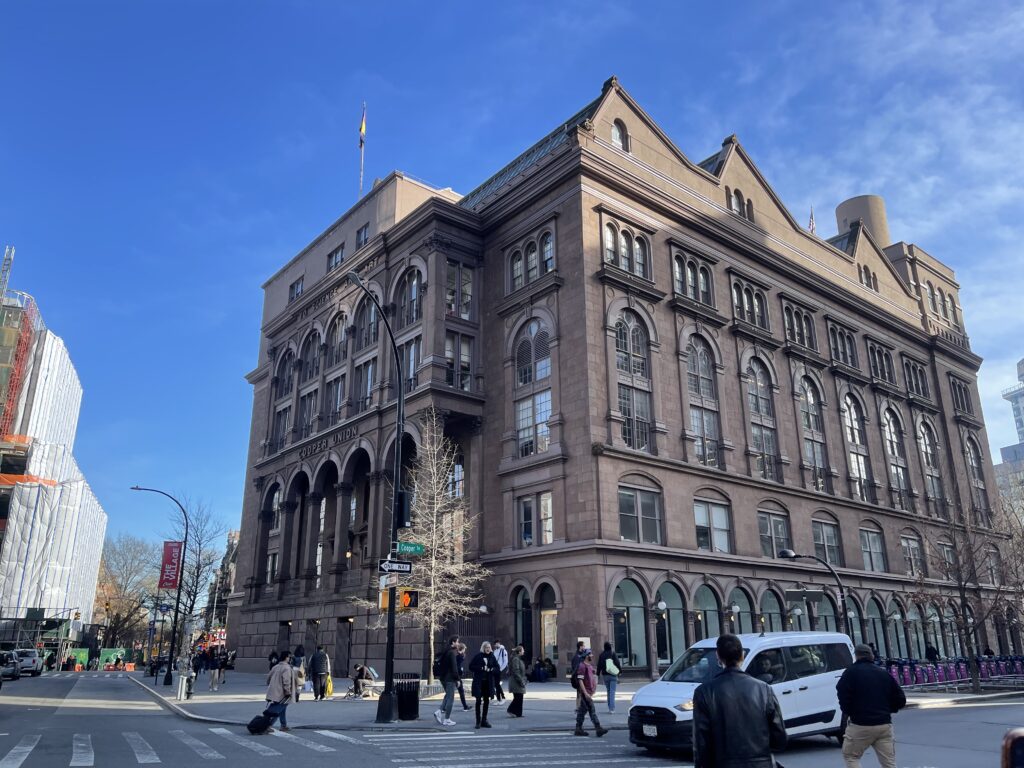I recently visited The Cooper Union in Manhattan, where I toured the Albert Nerken School of Engineering. Here are some takeaways from my visit:
· Located downtown right by Astor Place, Cooper Union hosts undergraduate schools in art, architecture and engineering. While the art and architecture programs are hosted in the historical Foundation Building facing Astor Place, the engineering school is located down the block at Cooper’s sleek, modern 41 Cooper Square building, which opened in 2009.
· Although Cooper is no longer free, every undergraduate receives a half-tuition scholarship as well as any need-based aid for which they qualify.
· Cooper is made up primarily of 891 undergraduates, 490 of whom are in the engineering program.
· The engineering school offers majors in chemical, civil, electrical, mechanical and general engineering, as well as minors in computer science, math, chemistry and the humanities. It is generally easy for engineering students here to change their major early on. All students are required to take four humanities courses in their first two years, a project-based general engineering course in which they collaborate with students from across engineering disciplines, and a computer science course.
· The Vertically Integrated Projects (VIP) Program allows students to work on large-scale, interdisciplinary projects over several semesters while receiving faculty mentorship and opportunities for professional research.
· Engineering students can study abroad during the summer, conducting research in a lab or working on engineering-focused humanitarian projects across the globe.
· Intro classes have around 30 students, but class sizes eventually reach as small as 5-10 students. The engineering curriculum is rigorous, but students find support through resources like peer tutoring, office hours and a collaborative student body.
· Freshman housing is guaranteed. Cooper owns one dorm a few blocks up from campus, which features apartment-style singles, co-ed floors, social spaces with ping pong tables and the like and a cafe downstairs. 83% of freshman live in the dorm, and sometimes a few rooms are available for upperclassmen. Everyone else commutes to campus, with many local students saving money by living at home with their families.
· While there is one fraternity on campus, Cooper is not known for being a party school. The workload is heavy, and students often socialize at the library or while working on collaborative projects at 41 Cooper Square. The building houses a lounge, a small cafe, an art gallery where students display their work, and an outdoor terrace and garden (managed by the student gardening club). Other popular activities include going out in the city, partaking in one of the 60 student clubs, such as orchestra, a cappella groups, engineering competition teams or club sports, and hanging out in the dorm. There are designated club hours each week when no classes or office hours are held so that students don’t have to worry about missing club meetings.
· Engineering students mingle with art and architecture students through clubs, gen ed courses, electives, shared housing and joint research projects.
· A number of Cooper student organizations share space and/or members with NYU and The New School, including Hillel, the Black Student Union, and various professional societies.
· Students have access to extensive state-of-the-art engineering facilities at 41 Cooper Square, including a motor sports lab where students design, build and race a car each year, a fluid hydraulics lab that mimics seismic activity, a vibration and acoustics lab and many more major-specific labs.
